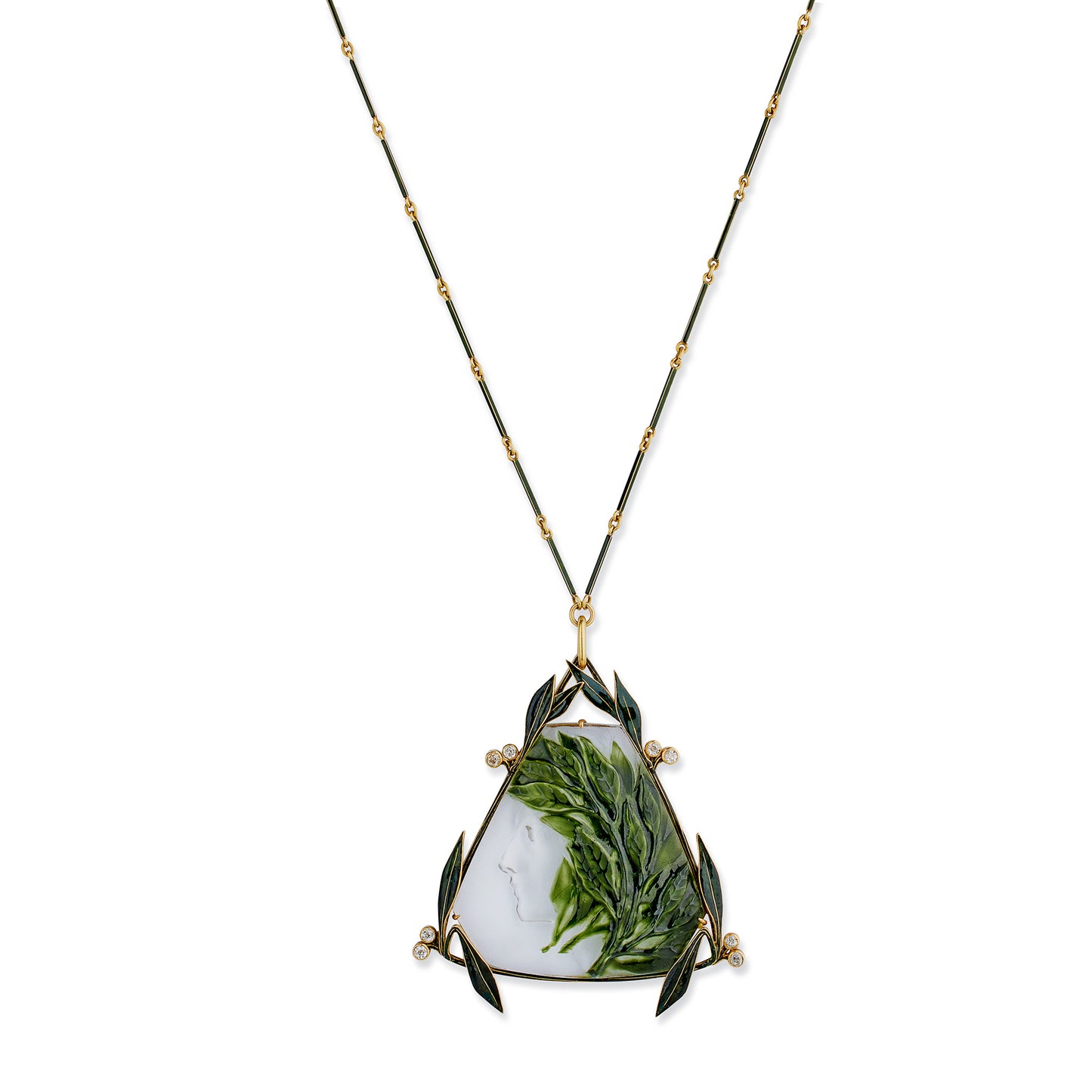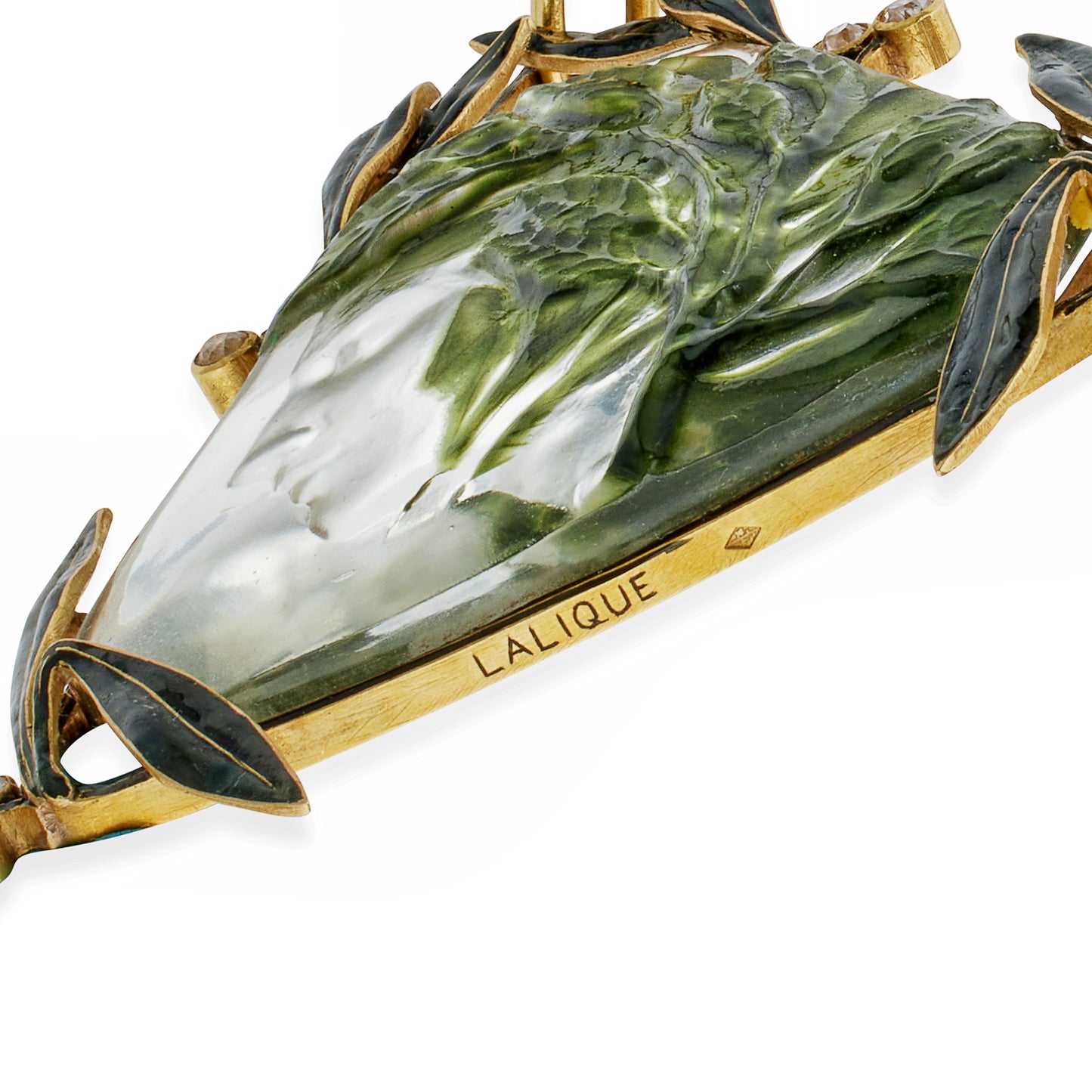René Lalique Art Nouveau Crystal, Enamel and Diamond Pendant Necklace
Item #: N-21381
Artist: René Lalique
Country: France
Circa: 1904-1905
Dimensions: 2.25" length, 2.00" width.
Materials: 8 old mine-cut diamonds (approximate total weight 0.40 carat); Enamel on Glass; 18K Gold
Signed: LALIQUE, with poinçon of maker's mark
Exhibition History: Brussels Exhibition, 1965, no. 47, 18.
Literature: A jewel of this design is pictured in "René Lalique 1890-1910 Schmuck und Objets-d'Art", the catalogue raisonné by Sigrid Barten, p. 356, item 787. Further, an allegorical personification of "war", representing a similar visage framed by laurel, and dating from 1898-1900, is pictured in The Jewels of Lalique, Yvonne Brunhammer, ed., p.63.
Item #: N-21381
Artist: René Lalique
Country: France
Circa: 1904-1905
Dimensions: 2.25" length, 2.00" width.
Materials: 8 old mine-cut diamonds (approximate total weight 0.40 carat); Enamel on Glass; 18K Gold
Signed: LALIQUE, with poinçon of maker's mark
Exhibition History: Brussels Exhibition, 1965, no. 47, 18.
Literature: A jewel of this design is pictured in "René Lalique 1890-1910 Schmuck und Objets-d'Art", the catalogue raisonné by Sigrid Barten, p. 356, item 787. Further, an allegorical personification of "war", representing a similar visage framed by laurel, and dating from 1898-1900, is pictured in The Jewels of Lalique, Yvonne Brunhammer, ed., p.63.





















